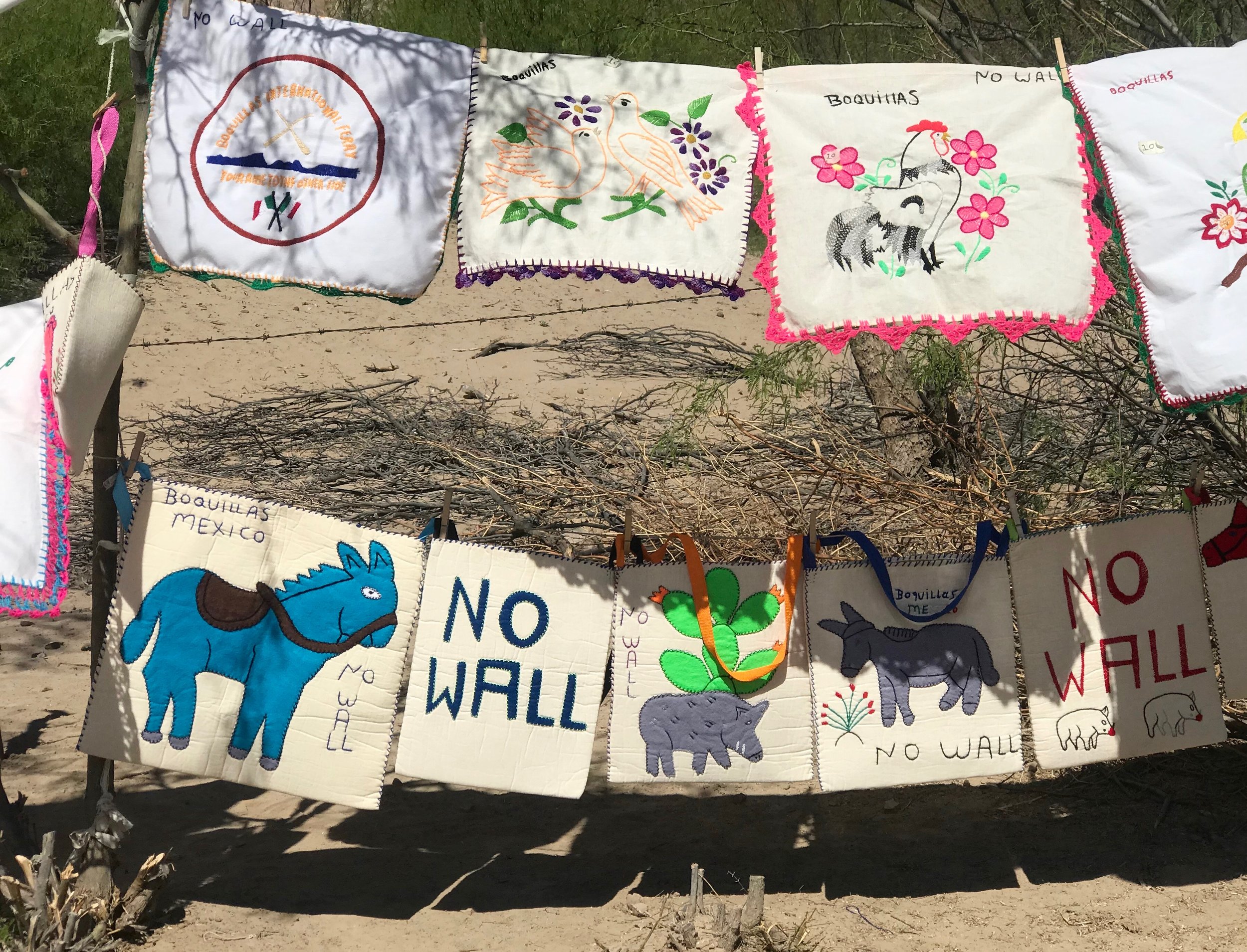No place for a wall
In Big Bend, opposition on both sides of the border
By Rick Holmes
March 16, 2018
Big Bend National Park, Texas – There’s no Border Patrol visible at the Boquillas Crossing Port of Entry, just a National Park Service ranger greeting tourists five days a week. It’s a short walk from there to the banks of the Rio Grande River, the international boundary that looms so large in immigration politics.
The boundary is not so large in real life, maybe 20 yards across. For $5, a Mexican will take you across in a rowboat. For another couple of bucks, you can ride a donkey the three-quarters of a mile to Boquillas del Carmen, but it’s an easy enough walk.
The sleepy village feels like Mexico out of an old movie. It’s got one main unpaved street, two restaurants and a bar serving enchiladas and strong margaritas to the day-trippers from El Norte. Children sell wire trinkets and embroidered squares from roadside tables. Many of the traditional embroidered souvenirs carry a modern message: “No Wall.”
After lunch, the boatsman returns us to U.S. soil. At a kiosk inside the Port of Entry’s small building, we slip our passports into a computer scanner and are instructed to pick up a phone and look into the camera nearby. A Border Patrol agent in El Paso, 300 miles away, asks a few questions about who we are and what we purchased during our afternoon in Mexico, and welcomes us home.
That’s a pleasant contrast to other border crossings I’ve experienced. In Del Rio, I sat in traffic for over an hour on the bridge over the Rio Grande, as drivers faced more strenuous questioning and sometimes searches by the Border Patrol. The lines at major crossings – San Diego, El Paso, Brownsville – are far longer, the law enforcement presence far stronger. Even re-entering from Canada is more of a trial than Boquillas Crossing.
The 510 miles of border here in Big Bend National Park aren’t as undefended as it appears. Border Patrol agents roam in even the most remote places, with night-vision equipment to watch for drug smugglers and unauthorized immigrants. There are sensors in the desert and a blimp overhead. Motorists are stopped and scrutinized at checkpoints on every paved northbound road, some of them 100 miles from the border.
For years, this part of the border has mostly been protected by its remoteness. Here, the Rio Grande slices through the Chihuahan Desert, far from population centers in either Mexico or the U.S. Natural barriers tower higher than any wall. No smuggler is likely to rappel down the 1,500-foot walls of Santa Elena Canyon.
But they don’t have to. I soaked in a hot spring in the National Park near Rio Grande Village and cooled off by swimming over to Mexico and back. At Lajitas, just outside the western end of the park, you can walk from Mexico to a golf course on the U.S. side without getting your shirt wet. At Boquillas Crossing, all a smuggler has to do is walk around the Port of Entry building.
As the border has been strengthened in more populous areas to the east and west, smuggling in the Big Bend sector has increased. It’s “the absolute weakest link in the border,” Border Patrol Agent Lee Smith told the Los Angeles Times.
But Big Bend isn’t just the weakest link on the border, it is the most beautiful: Desert rich in cactus and sage bumps up against rock buttes and mesas, their volcanic history written in multi-colored stripes; a narrow ribbon of water wanders in and out of steep canyons, past mountains wrapped in haze, flanked by bright green vegetation.
Where in this stunning landscape could you fit a wall? The president went to California recently to inspect prototypes for his “big, beautiful wall.” Any of them would be an ugly scar in Big Bend.
The official border runs down the middle of the Rio Grande River. Building a wall there would cause irreparable damage to wildlife and scenery in an environmental treasure the government has been dedicated to protecting since 1944. It would also destroy one of the nation’s largest national parks as a tourist destination.
It’s not surprising that there are “No Wall” signs on both sides of the border.
A big wall in Big Bend would damage much and accomplish little. Smugglers long ago learned that walls can’t stop planes, ships and tunnels. As former Homeland Security Director Janet Napolitano has said, “Show me a 50-foot wall and I’ll show you a 51-foot ladder.”
As a campaign slogan, Trump’s wall worked, at least with some voters. But as U.S. Rep. Will Hurd, a Republican whose district includes Big Bend, says, a wall is “the most expensive and least effective way to do border security.”
Someone needs to explain that to President Trump.
Rick Holmes can be reached at rick@rickholmes.net. You can follow his journey at www.rickholmes.net. Like him on Facebook at Holmes & Co, and follow him on Twitter @HolmesAndCo.




